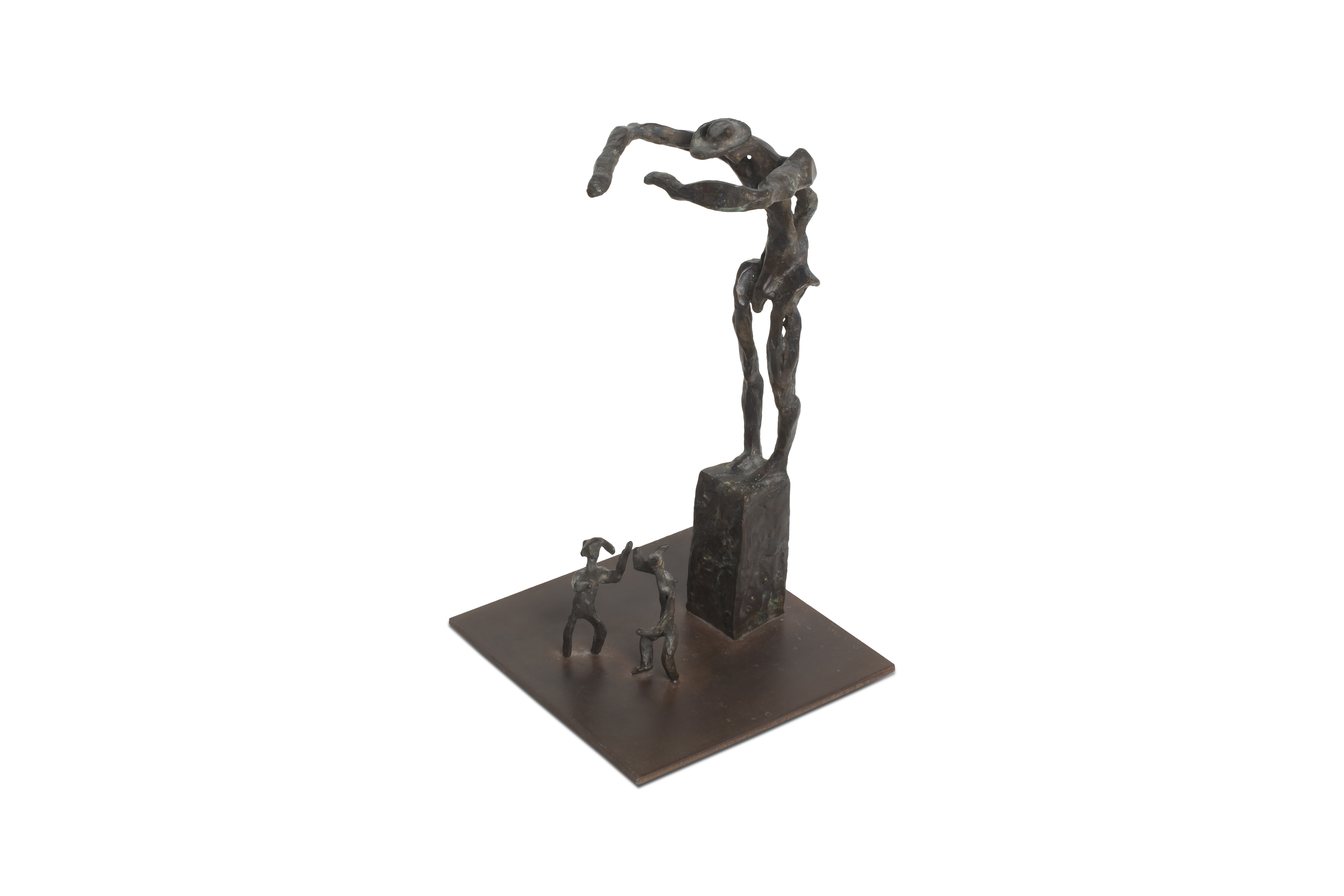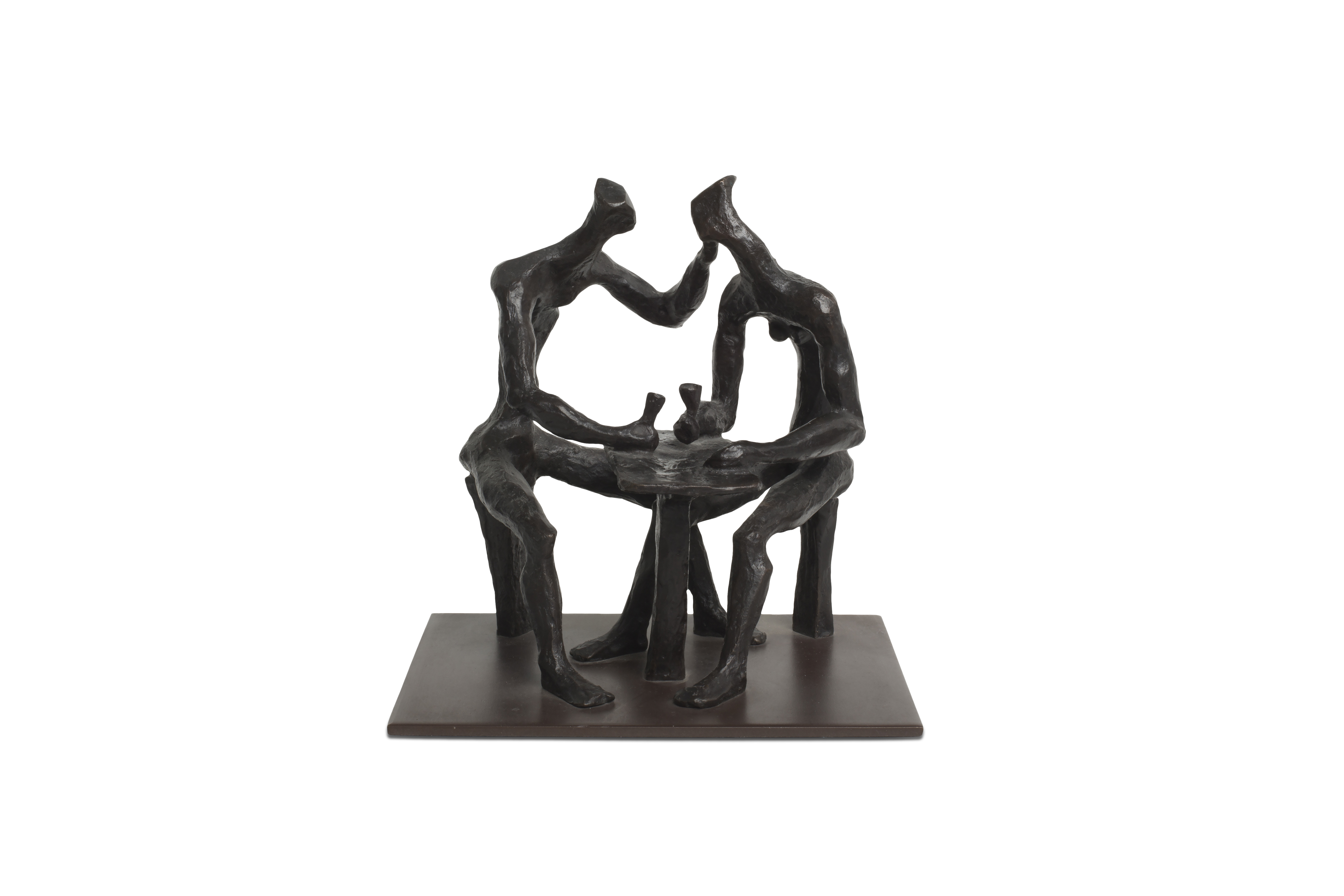No products
By: Fátima Ruiz
The creative universe of Luisa Rodríguez (Madrid, 1955) orbits in parallel with her personality, her way of being optimistic, dreamy and her immense appreciation for nature and for the life she perfectly shapes in her sculptures. "It is important to always keep our ancestors in mind, because we are a consequence of them. But our gaze has to go forward with what we've learned and what's new to do," he whispers in a impasse after the interview. A very personal philosophy in which it sums up past, present and future.
Where was his passion for sculpture forged?
From a young age, my biggest divert was drawing butterflies and coloring them. I was fascinated by it. Later I start to want to be a sculptor, when I see Gustave Doré's engravings on 'El Quixote'. It was played with cardboard-sized Chinese nib and ink. A grammar teacher at the school would ask me for the drawings and I would give them to him (he will now have a collection with my drawings) (laughs). And something I was very passionate about was copying paintings by Goya and Velázquez, such as 'Las spinners', because my mother often took me to the Prado Museum. But when I really decide that I want to make sculpture, it's when I see the figures of Praxíteles, Donatello and Michelangelo. Praxíteles is elegant, sensual and above all I am attracted to the dreamy gaze of all his sculptures, in which I got trapped.
And what about Praxites in his work?
The dreaming. But it's the viewer who has to figure that out. The sculptor works and is unaware of what he is doing. Not everything is thought out. It's kind of thoughtful, nothing done, and you're working as you can and you know.

How did your relationship with the Layer Foundry begin?
I belonged to the 'The Vaqueria' group. One of the members told us that Capa wanted to open a gallery with small and serial pieces and that if we wanted to collaborate, which we found great. We got to work and there are the pieces. De Capa i value his professionalism and, above all, his concern to have the latest technologies at the reach of the sculptor. It's critical.
Your ideas, through what themes make sense?
'You and I', 'Encuentro' and 'El Tirititero' are three of the pieces I founded in Capa; 'maternity' reflects daily life; 'Riding in Dreams' touches the world of dreaming as well; and 'Dreamer', which made Chagall appear in my head. 'You and I' is like making an intimate moment. When I started creating the piece, Cezanne's card players were constantly coming to mind: those two characters in front of each other playing, isolated from the environment... And there's a point that strikes me a lot in that picture: the table and the tablecloth. He's in the foreground and you feel him alive. It's like the beating of a heart. They are characters that are close, but at the same time far away, engrossed. 'You and I' reproduces that intimate moment of reflection and they are two characters who toast for life, for the moment, but the table slides in the middle of them as if it were a train track and there is a question in the air: "Will our paths be parallel?"
What materials do you prefer to shape your inspiration with?
I really like wood and stone, but I think in sculpture bronze is the material par excellence. It is one of man's great achievements to have made that copper and tin alloy. Bronze is a bit expensive and I'm researching with new pathways, such as the alabaster that is providing me with some very interesting discoveries for my dialogue. It's a stone that comes very close to what I'm looking for. I also play with wood and iron.
What is the most significant work for Luisa Rodríguez?
'Encounter' is a piece in which two characters walk in the opposite direction and there is a moment when they find themselves. It's that moment of recognition when his arms are linked in two circles. In my dialogue, the circle is as a refuge, as a mother's womb, but then they will continue each one on their way. It's like that beautiful moment, which is like fading poetry. Don't catch him, he doesn't stay.
Do you believe for pleasure or as a way of life?
As a way of life it doesn't (laughs). Very few have managed to live off sculpture. For pleasure and necessity. I had a season that I couldn't work and I didn't feel alive. I needed to work. I don't know what all that is about.
Contemporary Sculpture vs Classics What do you prefer?
The classics, of course. We are always learning from them, with our tools, with the time we have been living... Currently new technologies are changing a lot the way we do, there may come a time when not even the sculptor touches the matter... Every last touch-up could be replaced. Everything in life requires effort, reflection and constant work. I think young people are on it. There's been a time worthited and I think we all know everything isn't worth it. I like to go on my walks through 'Arrow' - where there are young people presenting their sculptures. I think it's interesting. I am pleased to see that there are people very seriously working on the sculpture. There are many cultures, a lot of oriental influence, I like where you walk.
His most recent exhibition, 'Light and Transparency', is where he showed his most current works?
The exhibition was seen in Madrid in November 2015 and in February 2016 in Brussels. The idea arises because I want to do something with transparency. The alabaster reminds me of having seen it in the Romanesque churches, where its light is not like the one that pierces through the stained glass windows. It's a totally different light. And I also wanted them to be noble materials. We are in a time when there is a horrible corruption, so that a clean light came to you I found very interesting. I started thinking about it and i was creating through nature. I'm very inspired by her, I love watching her, there's life there. All. We are nature, there is light, shadow, color, water... it's all. And then of course I am inspired by poetry and music, music is the great art.

